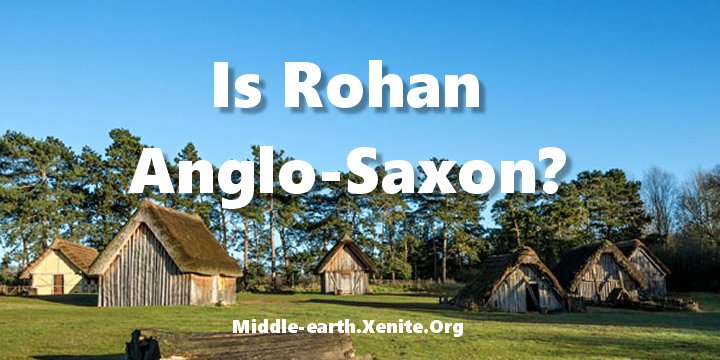
Q: Is Rohan Anglo-Saxon?
ANSWER: The question “is Rohan Anglo-Saxon” deserves a straight answer but it’s impossible to offer the exact, precise answer people are looking for. Rohan is a fictional country comprised of fictional people who supposedly lived around 6,000 years ago. There were no Anglo-Saxon peoples 6,000 years ago. The Angles and Saxons were Germanic peoples, and there were no Germanic peoples 6,000 years ago. In fact, 6,000 years ago there weren’t even any Indo-European peoples.
The Lord of the Rings is set in a mythical or fictional past time period that, according to author J.R.R. Tolkien, occurred around 6,000 years ago. The peoples in the story are fictional peoples who — if they had lived — would not have been the Germans and Scandinavians of history. They might, in the author’s mythology, have been the ancestors of those Germans and Scandinavians of history.
But J.R.R. Tolkien used the Old English (Anglo-Saxon) language to represent that language of Rohan. Why did he do that, if he did not intend the Rohirrim to be identified with the Anglo-Saxons of early English history?
Some critics argue that the Rohirrim are simply a literary metaphor for the Anglo-Saxons whose language Tolkien is closely associated with — that he romanticized them in a fictional setting that was nonetheless completely English in its structure and texture.
On the other hand, Tolkien himself denied any such connection — perhaps as a light-hearted joke with his more astute readers. In his notes Tolkien sketched out a table which explained that he would use Modern English to represent the Common Tongue of Middle-earth, Old English to represent the language of the Rohirrim, and Old Norse to represent the language of Dale (and Esgaroth). It is clear from Tolkien’s chart that he wanted to use real languages to give the story a sense of familiar variety; the languages sound natural.
This fictional construction even extended to using the Gothic language to represent an earlier form of the Rohirric language, this despite the fact that Gothic was an East German language that was approximately contemporary with the language of the Angles and Saxons (who were West Germans). Tolkien gave his characters from Rohan names in Old English. He named their cities (Edoras and Aldburg) in Old English, although he also created some place-names in Modern English (Snowbourne, the Hornburg) or something that sounded like Modern English.
The poetry that Tolkien used to represent the Rohirric language was also based on real Old English poetic rules. Nonetheless, these fictional constructions don’t mean that the reader should infer that the Rohirrim were in fact Anglo-Saxons.
In literary criticism it is generally argued that Tolkien modeled the Rohirrim on the Anglo-Saxons, not with the intention or desire of including Anglo-Saxons in his story but rather for the purpose of using a real, historical culture to lend a sense of realism to Middle-earth.
In that sense, we can say that Rohan is Anglo-Saxon, but it’s more accurate to say that Rohan is Germanic, for it shares traditions with the Goths as well as with the Angles and Saxons. The Anglo-Gothic blend of traditions that Tolkien used for Rohan was intended to merge the best or most interesting qualities of the two peoples to create a model or ideal that would be represented by Rohan.
See Also:
“Is Tolkien’s Rohan Similar to Germany?”
“Tolkien’s Middle-earth Doesn’t Look Like Medieval Europe”
“How Did Tolkien Actually Portray the Rohirrim?”
# # #
Have you read our other Tolkien and Middle-earth Questions and Answers articles?
